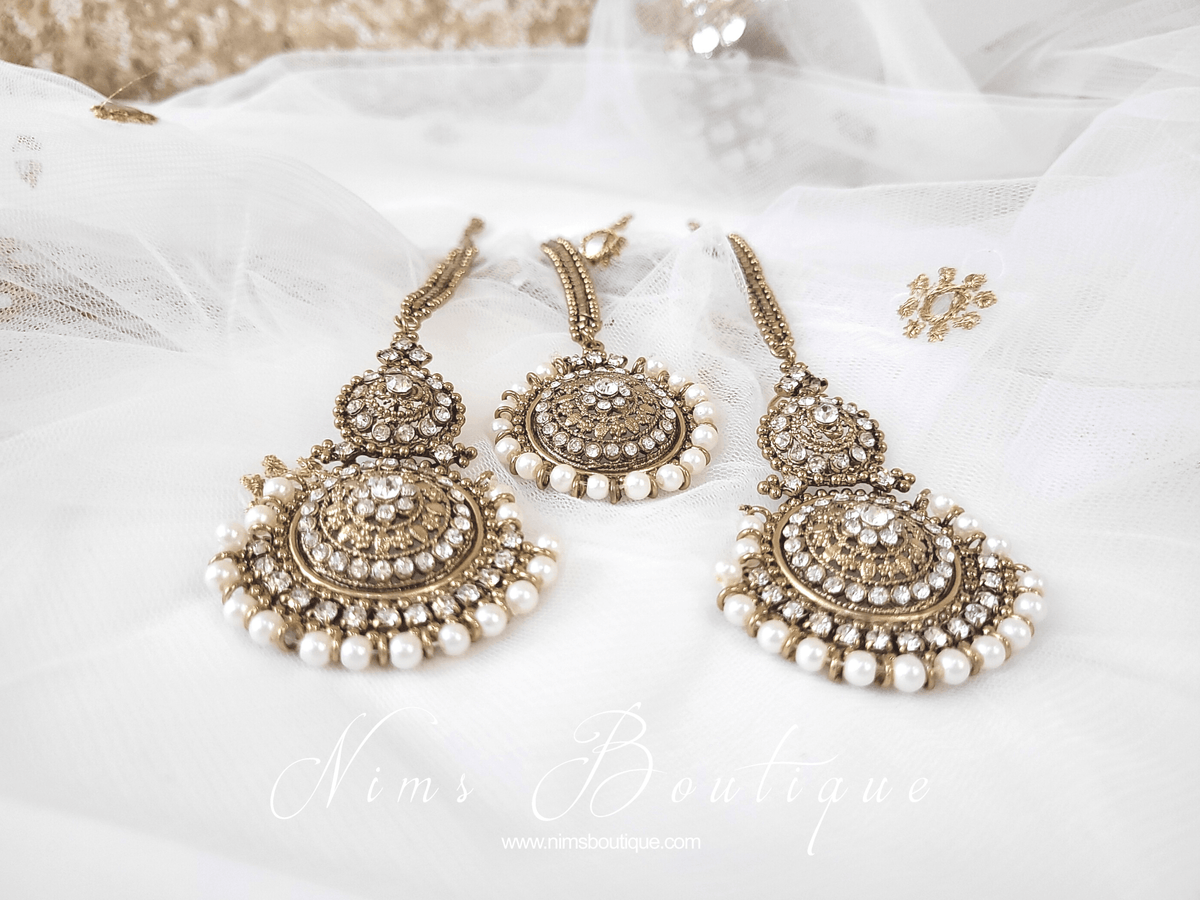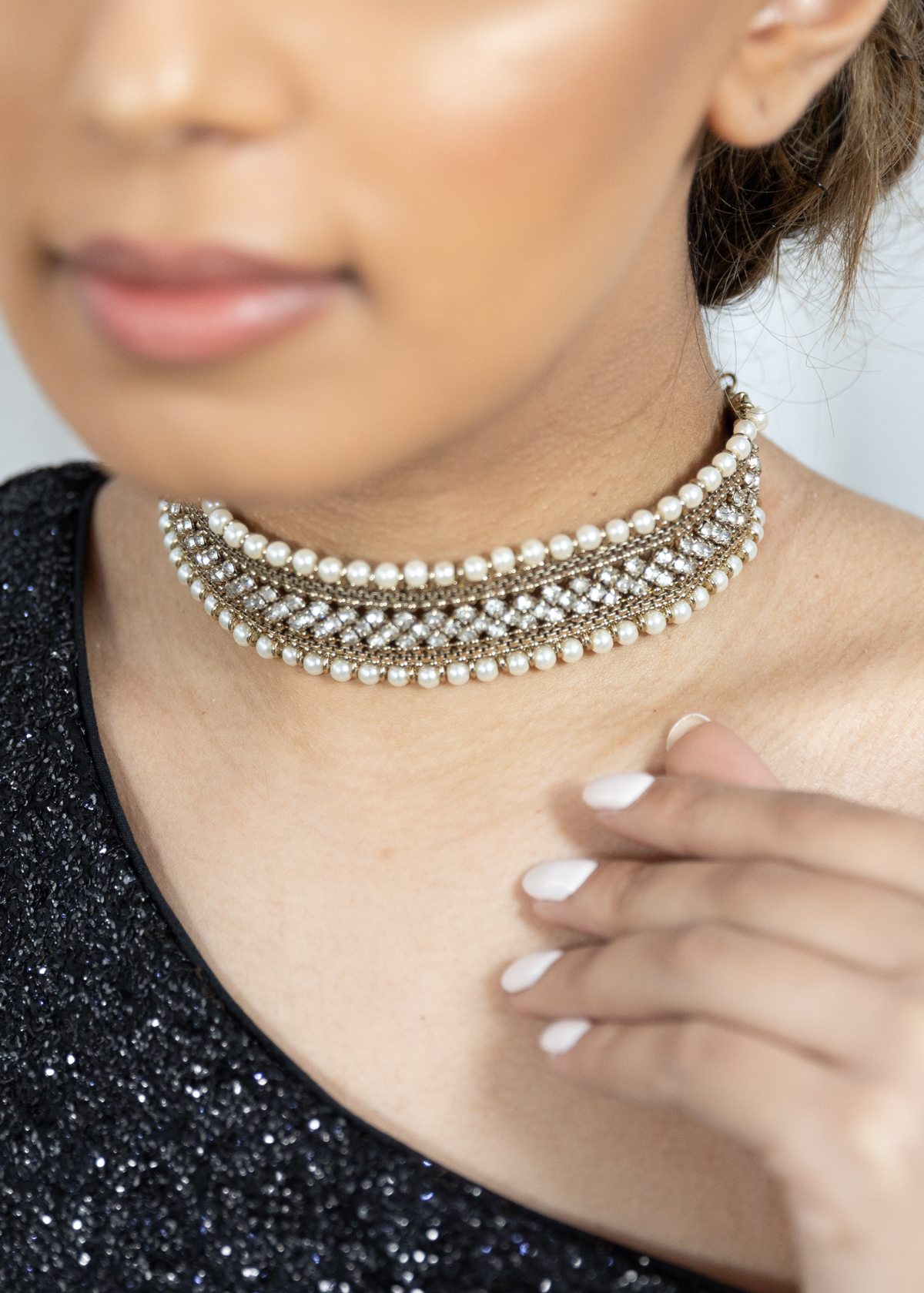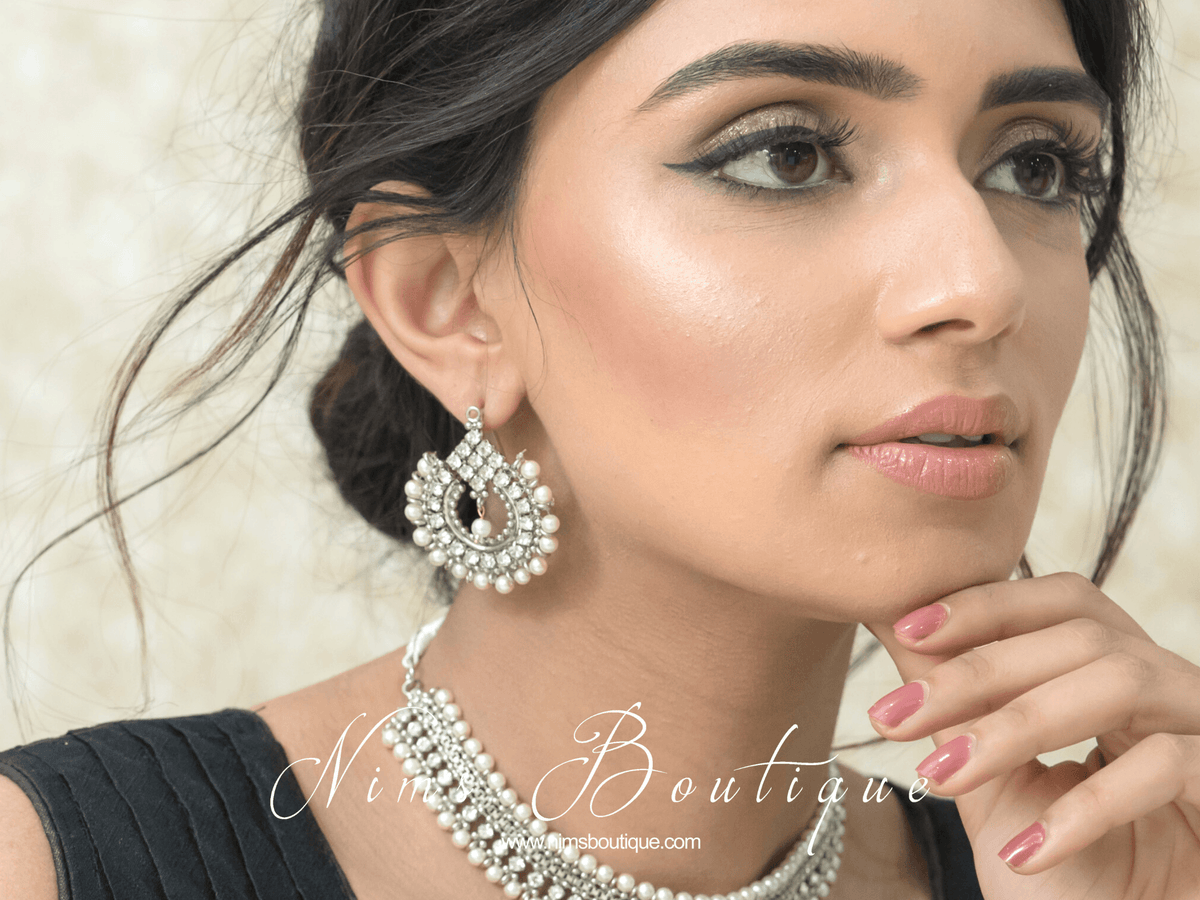Indian Jewellery Terms Explained: From Jhumkas to Hath Panja
Indian jewellery is rich with culture, beauty, and language. But if you’ve ever heard a word like chumke or hath pochi and weren’t sure what it meant (or how to spell it!), you’re not alone. At Nim’s Boutique, we love helping customers—whether you're from a Gujarati, Punjabi, or English-speaking background—understand the beautiful world of South Asian accessories.
In this blog, we break down popular jewellery terms, show how they’re pronounced, and explain how they’re referred to in different languages and regions.
💫 1. Jhumka / Chumka / Chumke
Pronunciation: jhoom-ka (Punjabi), chum-ka or chum-ke (Gujarati)
Also known as: Jhumki / Chumki
These are traditional dangling earrings characterised by a bell or dome shape that move with grace—perfect for weddings, sangeets, or mehndi nights.
-
In Punjabi, they’re commonly called jhumke or jhumka.
-
In Gujarati, you might hear chumke or chumka.
-
English speakers usually spell them jhumka.
🛍️ Shop our jhumka earrings for statement-making sparkle.

👑 2. Tikka / Teeka / Maang Tikka
Pronunciation: tee-kah
Also known as: Maang Tikka (worn at the hair parting)
A forehead ornament often worn by brides or wedding guests.
-
Tikka is the common spelling across both languages.
-
Teeka may be used interchangeably, especially in English transliteration.
🛍️ Explore our maang tikka collection for both classic and modern styles.

✨ 3. Bangles / Bangree / Choodiyan
Pronunciation: ban-guhlz (English), bun-gree (Punjabi), choo-dee-yaan (Hindi)
Also known as: Kangan (when thicker)
The term bangles is widely used in English, but:
-
In Punjabi, they are often called bangree.
-
In Gujarati, simply choodiyan or bangles.
-
Thicker versions are often referred to as kangan (see below).
🛍️ Browse our bangles and bangree sets to complete your look.

💎 4. Kangan / Patla
Pronunciation: kun-gun (Punjabi), put-la (Gujarati)
Meaning: Thick, solid bangles often worn in pairs or as bridal accessories.
A more formal version of bangles, kangan are popular at weddings and religious occasions. In Gujarati, they are also known as patla—typically wider and more structured than regular bangles, often worn by brides or as part of a bridal set.
🖐️ 5. Hath Panja / Hath Pancha / Hath Pochi
Pronunciation: huth pun-jah (Punjabi), huth pahn-cha or po-chee (Gujarati)
Meaning: Hand jewellery connecting the wrist to the fingers—often bridal or festive.
This striking accessory combines a bracelet and one or more rings, linked with delicate chains across the back of the hand. Known as hath panja in Punjabi and often hath pochi or hath pancha in Gujarati, it’s commonly worn at weddings or special occasions. Hath pochi can also refer to a soft, fabric-style bangle traditionally worn by brides or children for added comfort.
🛍️ Discover our hath panja jewellery for that regal finishing touch.

Why Spelling & Language Matter
The spelling and pronunciation of Indian jewellery terms often varies depending on your cultural background, region, and even generation. At Nim’s Boutique, we love welcoming customers from all walks of life—and part of that is making the language of fashion feel inclusive and approachable.
Whether you say chumke, jhumka, or dangling earrings, we’ve got something for you!
Shop With Confidence
We’ve created this guide to help you feel more confident when shopping—online or in-store. Our team is always here to guide you through sizing, styling, and terminology, so you leave with jewellery you love and understand.
Browse the full jewellery collection at nimsboutique.com or visit us in-store for a personalised experience.




